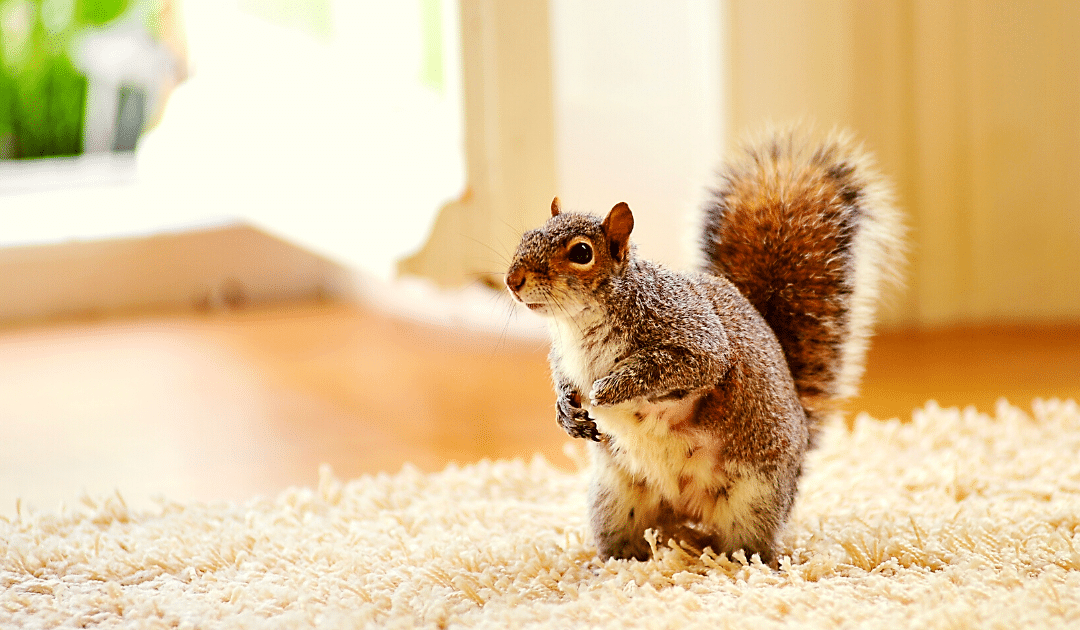Although wildlife can be cute from a distance, that doesn’t mean you want them moving in. Besides general annoyance, animals that become unwitting roommates can bring costly damage and risk of disease.
The first step in staying critter-free is to understand how and why they may be attracted to your home. Usually, it’s to secure safety, warmth, and proximity to food.
Here are the eight most common “intruders,” their methods for getting in, and some tips for keeping them out.
Squirrels
Did you know that squirrels’ teeth never stop growing? To keep them “trimmed,” squirrels must constantly chew. If they get into your home, it’s open season: they will gnaw on anything that isn’t metal. If a squirrel does make it in, you’ll probably hear it before you see it. Listen for gnawing sounds; also look for wood chips in unexpected places, water damage on ceilings and walls, damage to the roof or beams, and droppings in the attic.
Raccoons
Anyone who’s had raccoons in their yard knows their penchant for destruction. Tipped-over garbage bins, dug-up gardens, and pilfered animal feed. But the real damage comes when they enter your home. They can destroy insulation, leave urine and feces everywhere, and gnaw electrical wires. Make note that female raccoons start scouting denning locations to give birth during late winter.
Rodents
Especially during winter months, mice and rats seek shelter so they can nest and forage for food. They can carry various diseases which can be transmitted through scratches, bites, and droppings. In addition to the hygiene issue, they can chew through wiring, wood, pipes, and brickwork. They even put your home at risk of fire due to sparks from chewed wires.
Skunks
People and pets are afraid of skunks for good reason – their powerful, redolent smell can linger for months. So focus on skunk prevention rather than removal. Often lured by food or cozy-looking spots under porches and decks, skunks can not only damage your home but also injure your pets. These critters are notorious diggers and burrowers, who can create holes in your lawn, garden, and under your home. They also like to access crawl spaces by tearing away their protective screens.
Birds
Birds start looking for shelter to build their nests in springtime. If they choose your home as theirs, they’ll probably go for your chimney, deck, attic, shed, or soffit. They may even nest in grills, vents, or elsewhere in your yard. They can cause structural damage, create a mess of debris, and leave unhygienic droppings. The damage is made worse when birds nest together.
Bats
Attics are a favorite place for bats to roost. One or two aren’t usually an issue, but if you suddenly have a colony on your hands, you have a problem. They can chew on wires and walls and destroy insulation. Their droppings cause an unpleasant odor and may cause histoplasmosis in humans.
Groundhogs
These furry critters will not only ransack your garden but can cause considerable damage by burrowing under your home. Over time and left unabated, their tunnels can loosen and shift the ground, causing structural hazards. This most commonly happens with homes built on slab foundations.
Opossums
You really don’t want your home in an opossum’s sights. They will make a mess of your pantry and tear at your walls and insulation to collect nesting materials. They can injure your pet, steal their food, and also spread disease to your household. Their smell is a close second to raccoons. To prevent this marsupial intruder, pay close attention to your basement, attic, garage, shed, and crawl spaces – all places they tend to take up residence. They usually get in through the siding, chimney, or loose screens or vents.
Tips to Keep Wildlife Out:
-
- Make sure trash and pet food are in bins and securely closed with a tight lid and/or bungee cords or ropes.
- Seal shut any holes or open or loose entry points into your home. Check the roof, siding, foundation, exterior walls, and trim. If your deck or porch is open underneath, seal it up.
- Cover and secure compost piles; never compost meat scraps.
- Trim tree limbs that can act as “highways” to your roof.
- Keep gutters clean and free of debris.
- Install chimney caps and steel screens on vents.
- A sturdy fence that’s buried at least 18” underground and 5 ft above ground will stop animals from burrowing under and jumping over.
- Check out the options for repellants – they come in the form of chemical sprays, motion-activated sprinklers, and sound emitters (the latter can annoy pets, though).
By knowing how wildlife sizes up your home and taking precautions to safeguard it and remove temptation, you’ll be well on your way to keeping wildlife in the wild.
Wondering if your home insurance policy covers damage caused by animals? Call your California Casualty representative today!
This article is furnished by California Casualty. We specialize in providing auto and home insurance to educators, law enforcement officers, firefighters, and nurses. Get a quote at 1.866.704.8614 or www.calcas.com.
- Graduation – When to Remove Your Child from Your Auto Policy - May 18, 2023
- How to Prevent Catalytic Converter Theft - May 17, 2023
- How Much Does Home Insurance Cost? - May 17, 2023

